Search results for: “companies”
-
Renewable diesel: the economics?
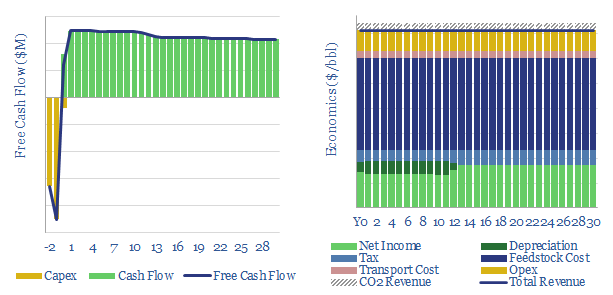
Our base case is that a US renewable diesel facility must achieve $4.6/gallon sales revenues (which is c$200/bbl) as it commercializes a product with up to 75% lower embedded emissions than conventional diesel. Similarly, a bio-diesel facility must achieve $3.6/gallon sales on a product with 60% lower embedded emissions.
-
3D printing an energy transition?
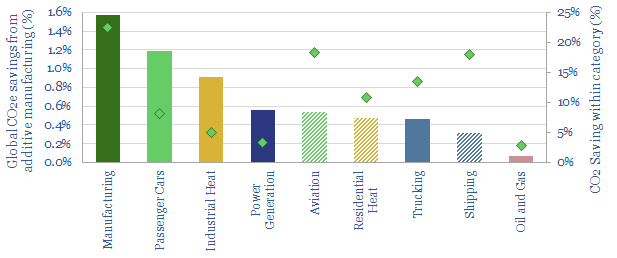
Additive manufacturing (AM) can eliminate 6% of global CO2, across manufacturing, transport, heat and supply chains. We have quantified each opportunity and reviewed 5,500 patents to identify who benefits, among Capital Goods companies, AM Specialists and the Materials sector.
-
Energy storage: batteries versus supercapacitors?
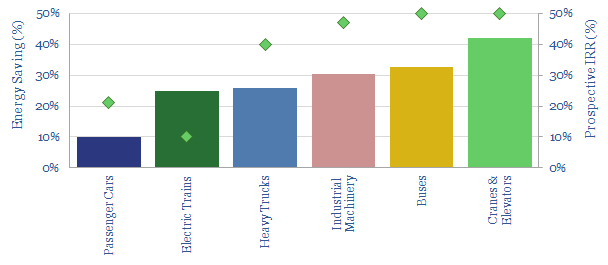
Supercapacitors may eclipse lithium ion batteries in the hybridization of transport and industry. Their energy density is improving. Potential CO2 savings could surpass 1bn tons per year. IRRs of 10-50% can be achieved, even prior to CO2 prices. These are our conclusions after reviewing 2,000 Western patents. We profile the leading companies exposed to the…
-
Hydrogen vehicles and fuelling stations: where’s the IP?
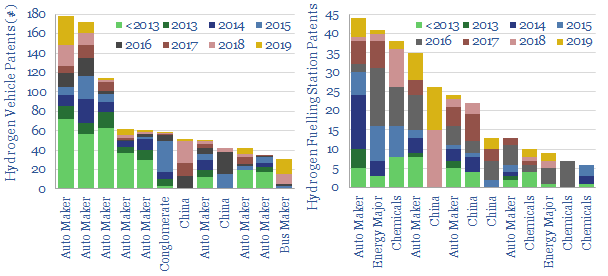
We cleaned 18,600 patents into hydrogen vehicles and vehicle fuelling stations. Technology leaders include large auto-makers, industrial gas companies, Energy Majors and hydrogen specialists. Overall, the patents indicate the array of challenges that must be solved to scale up hydrogen fuel in transport.
-
Backstopping renewables: cold storage beats battery storage?
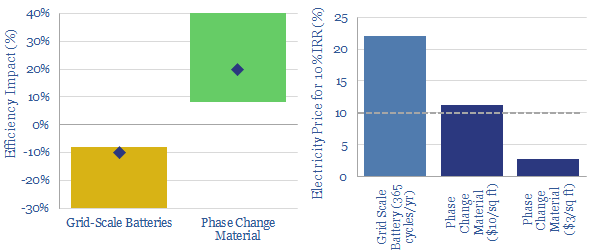
Phase change materials could be a game-changer for energy storage. They can earn double digit IRRs unlocking c20% efficiency gains in freezers and refrigerators, which make up 9% of US electricity. This is superior to batteries which add costs and incur 8-30% efficiency losses. We review 5,800 patents and identify leading companies.
-
Organic Rankine Cycles: the energy economics?
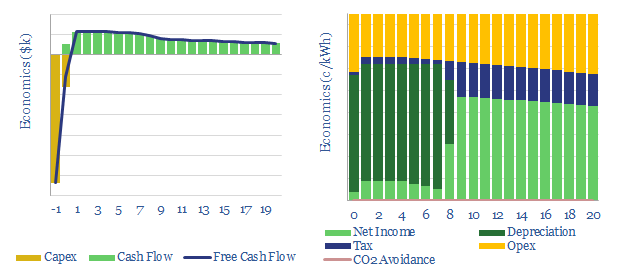
This data-file captures the energy economics of an Organic Rankine Cycle to recover low-grade waste heat (at 70-200C) from an industrial facility, or in the geothermal industry. A CO2 price of $50-75/ton could greatly accelerate adoption and improve the efficiency of industrial facilities.
-
Tesla: where’s the IP?
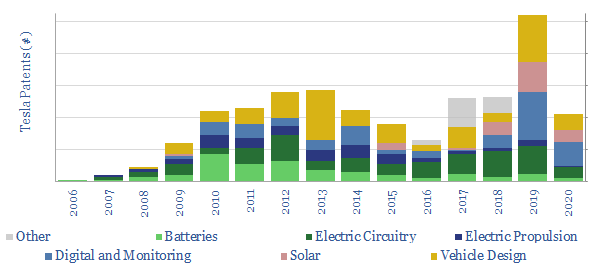
This data-file compiles all of Tesla’s patents, classifies them across 1,000 patent families, and describes their innovations. Our conclusion is that Tesla holds less patented IP than rival auto-companies. However, where it has filed patents, it is more focused on pure EV innovations, including recently, big data solutions and improved batteries in 2019-20.
-
Refinery membranes: where’s the IP?
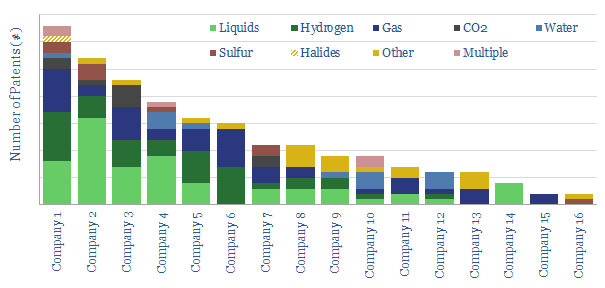
This data-file reviews over 1,000 patents to identify the technology leaders aiming to use membranes instead of other separation processes (e.g., distillation) within refineries. Operational data are also presented for an ExxonMobil breakthrough and Air Products’s hydrogen recovery technology.
-
Low-carbon refining: insane in the membrane?
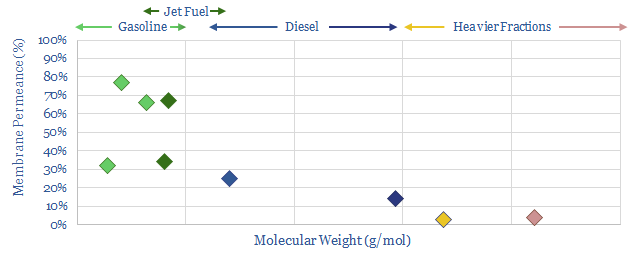
1% of global CO2 comes from distilling crude oil at refineries. An alternative uses precisely engineered polymer membranes to separate crude fractions, eliminating 50-80% of the costs and 97% of the CO2. We reviewed 1,000 patents, including a major breakthrough in 2020. This 14-page note presents the opportunity.
-
Fuel cells: performance, efficiency and decline rates?
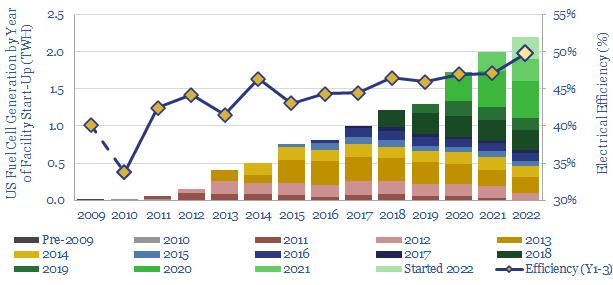
This data-file captures the performance of c160 fuel cell power plants, installed to-date in the US, generating over 2TWH of electricity, looking facility-by-facility, year-by-year. How has the performance, efficiency and longevity of US fuel cell power plants been trending over time?
Content by Category
- Batteries (84)
- Biofuels (42)
- Carbon Intensity (49)
- CCS (63)
- CO2 Removals (9)
- Coal (36)
- Company Diligence (85)
- Data Models (790)
- Decarbonization (156)
- Demand (103)
- Digital (50)
- Downstream (44)
- Economic Model (194)
- Energy Efficiency (75)
- Hydrogen (63)
- Industry Data (260)
- LNG (48)
- Materials (77)
- Metals (69)
- Midstream (43)
- Natural Gas (144)
- Nature (75)
- Nuclear (22)
- Oil (161)
- Patents (38)
- Plastics (43)
- Power Grids (116)
- Renewables (147)
- Screen (107)
- Semiconductors (30)
- Shale (50)
- Solar (67)
- Supply-Demand (45)
- Vehicles (88)
- Wind (40)
- Written Research (332)
Show More
